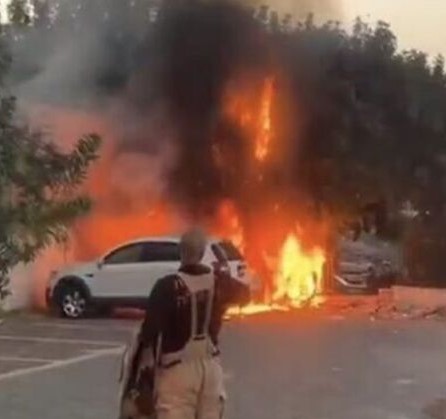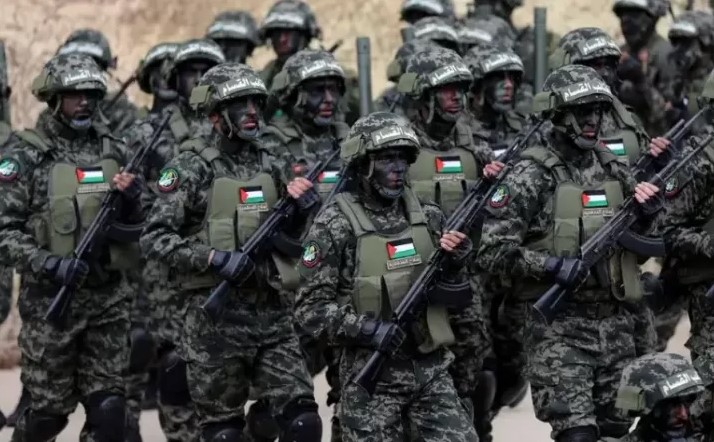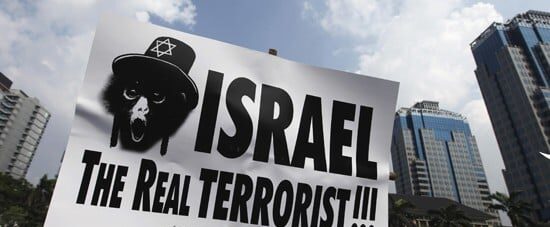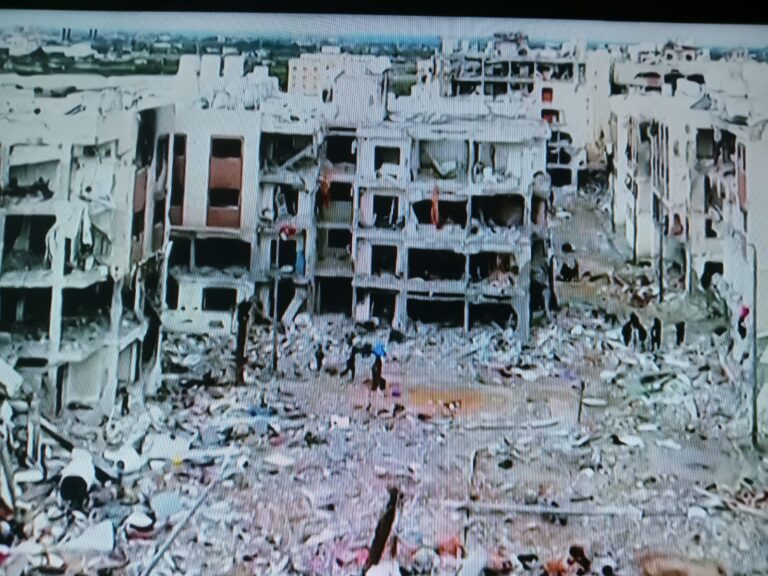
STRATEGIC ASSESSMENT. US. National Security Adviser (NSA) Jake Sullivan submitted an article for publication in Foreign Affairs magazine, arguing the Middle East region “was quieter than it has been for decades.” A few weeks later, Hamas’ incursion into Israel and its subsequent permutations have upended virtually all the assumptions and assessments that factored into Sullivan’s assertion. The eruption of significant violence in the region has, among other implications, decisively derailed U.S. efforts to focus on the “pacing threat” posed by China. U.S. assessments that Russia’s concentration on its war with Ukraine would confine Moscow’s regional focus to Syria have been undermined. Yet, it is not inevitable, despite the conflict that has been more extensive than virtually any analyst predicted, that the region has entered into a period of steadily escalating and intractable warfare and humanitarian disaster.
At the time Sullivan submitted his tract, U.S. and regional officials had concluded, first and foremost, that the Israeli-Palestinian conflict and Palestinian demands for statehood were no longer a central feature of the region’s geostrategic alignments. In 2020, several Arab states – the United Arab Emirates (UAE), Bahrain, Morocco, and Sudan – joined longstanding Israel treaty partners Egypt and Jordan in normalizing relations with Israel. When Sullivan drafted his piece, he and other high-ranking officials believed a groundbreaking agreement was in sight for Saudi Arabia to normalize relations with Israel. Leaders of the states that signed onto – or were considering joining – the “Abraham Accords” were clear that they would no longer condition their strategic positioning on the formation of an independent Palestinian state. However, all the Arab leaders continued to insist on an Israeli commitment to ending its occupation and supporting the establishment of a Palestinian state.
A Saudi-Israel agreement, strategists concluded, would solidify a broad geostrategic alliance between Israel, the United States and its global allies, and major Arab states – positioning this grouping to counter an Axis of Resistance centered on and funded by Tehran seeking to overturn the regional power structure to the advantage of Iran and its partners. Still, global experts had always assumed Iran and its allies would calibrate their actions to remain within established red lines and not risk provoking an all-out war, particularly one involving the United States. At the time of the Hamas attack, one Iranian ally, the Houthi movement (Ansarallah) in Yemen, had been largely abiding by an April 2022 ceasefire with the Republic of Yemen Government and appeared willing to sign onto a permanent settlement in the Yemen conflict. One month before the Hamas incursion, months of U.S. engagement with Iran had led to a significant exchange of prisoners coupled with additional one-time sanctions relief, leading some experts to conclude the U.S and Iran might be able to eventually return to discussing a restoration of the seminal 2015 multilateral Iran nuclear agreement (JCPOA).
One year after Hamas forces breached Israeli defenses and killed more than 1,200 Israelis and took 250 hostages back to Gaza, many of the assumptions global strategists had made about the region have been proved wrong. By orchestrating the October 7 incursion, Hamas hardliners in the Gaza Strip dedicated themselves to derailing the central thesis of the Abraham Accords – that the Arab states could bypass the Israeli-Palestinian dispute to focus on their own economic challenges and countering the threat from Iran. Widespread assumptions that conflict between Hamas and Israel had settled into a permanent pattern of occasional Hamas rocket attacks on Israel and Israeli air strike retaliation were proved incorrect.
The participation of Iran’s main ally, Lebanese Hezbollah, in Hamas’ struggle against the Israel Defense Forces (IDF) has similarly voided universally accepted assessments that Israel and Hezbollah sought to prevent a repeat of their destructive 2006 conflict. For nearly the year after the Hamas attack, Israel and Hezbollah confined their actions mainly to tit-for-tat artillery and rocket strikes in areas near the Israel-Lebanon border. The low level of hostilities gave hope to U.S., French, and regional diplomats that a diplomatic solution was within reach under which 90,000 Lebanese and 65,000 Israelis displaced by the border clashes could return to their homes. Yet, the intensity and scope of Israel’s escalation against Hezbollah beginning in September, and which included the killing of Hezbollah leader Hassan Nasrallah on September 27, surprised U.S. and regional officials and has largely derailed diplomatic efforts to arrange a ceasefire. Israel’s special forces-led ground incursion into south Lebanon in early October caught off guard experts who had long assumed Israel would avoid repeating operations that, in the past, had led to extended and costly ground battles and territorial occupations in south Lebanon.
Israel’s airstrikes and operations against Iranian interests and allies in Syria, Lebanon, and Iran itself have significantly elevated fears that the primary U.S. goal – preventing the October 7 Hamas attack from producing a regional conflagration – is beyond reach. A major regional war appeared to be nowhere in sight when Sullivan penned his Foreign Affairs article, but the possibility is front and center now, after two Iranian missile barrages against Israel (April 13 and October 1). Iranian leaders apparently concluded they needed to restore deterrence after Israeli airstrikes had destroyed an Iranian diplomatic facility in Damascus, killed several Islamic Revolutionary Guard Corps – Qods Force (IRGC-QF) senior figures, and assassinated top Hezbollah commanders and Nasrallah. An Israeli intelligence operation killed Hamas’ top leader, Ismail Haniyeh, who was visiting Tehran on July 31.
The Israeli attacks on Iran and its allies, and the unprecedented Iranian missile retaliation from Iranian territory itself, moved what had been a decades-long ”shadow war” between Israel and Iran into the open. Even though the Iranian missile barrages were mostly intercepted by Israel, with help from U.S. forces and even some Arab partner states, Israeli leaders considered the launches to require retaliation in order to restore deterrence. Israeli and U.S. leaders are reportedly discussing the scope of Israel’s response to the October 1 Iranian barrage, from which several missiles hit in and around Israel’s Nevatim military base. U.S. leaders are said to be discouraging Israel from striking Iranian oil facilities or, particularly, its nuclear sites.
Striking either of these sets of targets would, according to Washington, cause Tehran to respond and produce a spiraling war between the two – or potentially draw the United States into direct conflict with Iran. An Iranian response to an Israeli attack that results in the death of U.S. military personnel or substantially damages U.S. assets in the region is assessed by experts as likely to trigger a U.S. retaliatory response. The United States has placed substantially more assets in the region, particularly combat aircraft and air and missile defense systems, since the October 7 Hamas attack. The assets are targets for Iran-backed operations but also serve as a deterrent to escalation by Tehran or its allies.
U.S.-Iran conflict could represent the death knell for efforts by U.S. officials to confine U.S. operations to measured and proportional acts of retaliation. In the year since the Hamas operation, attacks on U.S. forces by Iran’s Axis of Resistance partners in Yemen, Iraq, and Syria have prompted relatively small retaliatory U.S. strikes on Iran’s allies in these countries. The U.S. strikes on the missile and drone arsenal of the Houthis have been intended to deter and degrade the movement’s ability to continue attacking commercial shipping in the Red Sea. Yet, the Houthi commitment to attacking commercial shipping and Israel – including launching drones and missiles at Israeli targets – has largely derailed any hopes global diplomats had for resolving the Yemen war in the near future.
Furthermore, reports in September 2024 that Moscow might arm the Houthis as a response to U.S. and European arms supplies to Ukraine have undermined broad assumptions that the Kremlin is consumed with the war in Ukraine and not in a position to involve itself anywhere in the region beyond its current mission supporting the Assad regime in Syria. Both before and after the October 7 Hamas attack, Iran has been supplying Moscow with military equipment. But the shipments were largely viewed as Tehran’s fulfillment of an obligation for Russia’s help securing Assad. Any confirmation that Russia is arming the Houthis, Hezbollah, or Iran itself would surely aggravate already heightened U.S.-Russia tensions.
Still, threads of global policy and diplomacy have the potential to de-escalate conflict in the region. Despite the threat to U.S. forces and interests posed by Iran’s network of militia allies, the U.S. and Iran have continued to engage directly and state their intent to avoid Iran-U.S. warfare. U.S. officials have encouraged Israel to restrain its retaliatory attacks against Iran and to undertake compromises necessary to achieve a ceasefire with Hezbollah and Hamas. Some assess Israeli military gains against both adversaries could pave the way for diplomatic compromise. Officials of the Arab monarchies of the Persian Gulf have continued to meet with their Iranian counterparts and, despite cooperating to help defend Israel against Iranian missiles, have not broken ties to Tehran. Nor has any Gulf state suspended ties with Israel.
Saudi leaders have not taken the prospect of normalizing relations with Israel, under set conditions, off the table. The Palestinian Authority (PA) remains operating in the West Bank and its security forces continue to cooperate with the Israelis against Hamas and other Palestinian terrorist factions. Fighting between the Houthis and the Republic of Yemen Government has not resumed, and the Houthis have not restarted missile attacks on Saudi Arabia or the UAE. Still, one year after the Hamas attack on Israel, few experts, leaders, officials, or region-focused humanitarian and other organizations are expressing optimism for the region in 2025.







